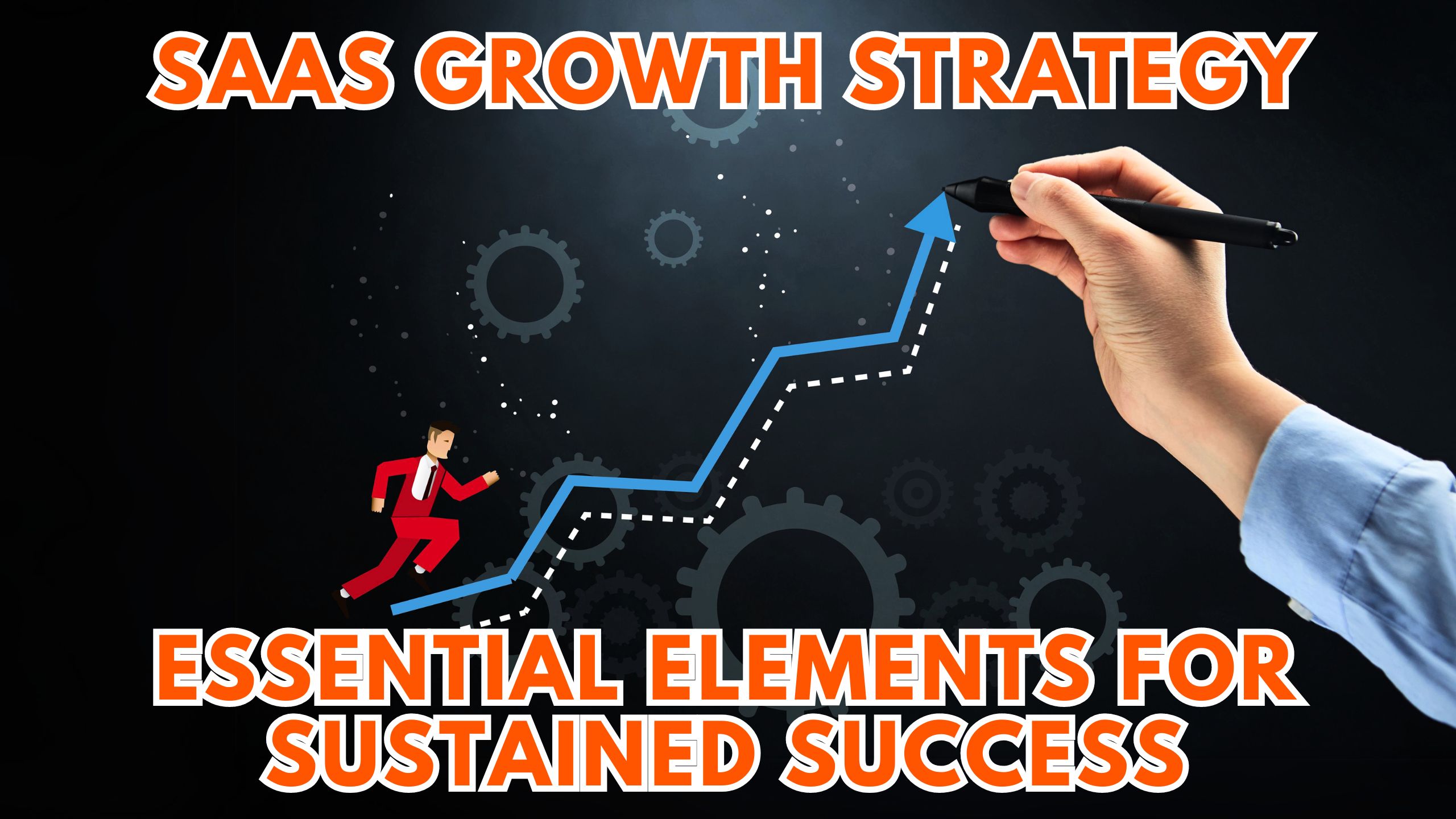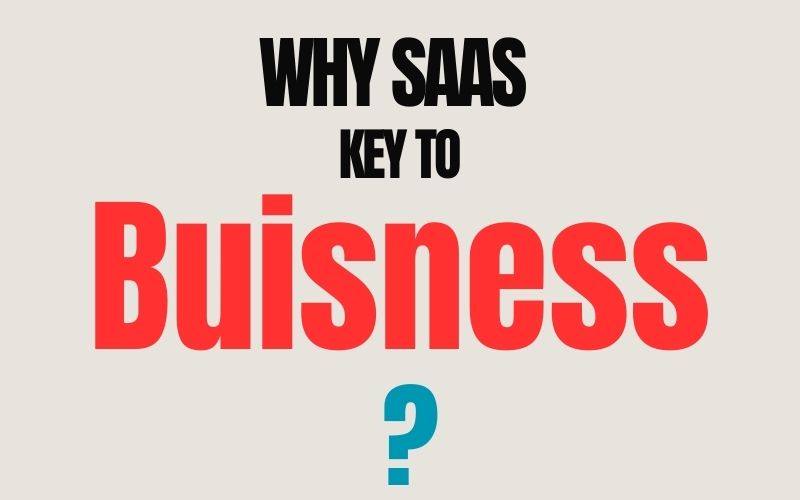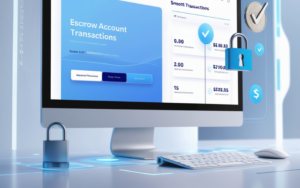SaaS solutions streamline operations and reduce costs for businesses. They offer scalable, accessible tools vital for growth and efficiency.
In today’s fast-paced business environment, staying ahead of the competition is crucial. This is where Software as a Service (SaaS) solutions come into play, becoming an essential component for businesses aiming for agility and innovation. By leveraging cloud-based applications, companies can enhance their productivity, improve customer service, and increase their market reach without the hefty upfront investment typically associated with traditional software.
SaaS platforms provide the flexibility to work from anywhere, ensuring that teams remain productive and collaborative, regardless of their physical location. This adaptability has made SaaS solutions a cornerstone for businesses looking to thrive in a digital-first world, making them an indispensable tool in the modern business toolkit.
Saas Basics
In today’s fast-paced world, businesses must stay agile and innovative. SaaS solutions play a pivotal role in this dynamic environment. Understanding SaaS basics reveals why these tools are not just helpful but essential for companies of all sizes. They offer flexibility, scalability, and cost-efficiency, transforming how businesses operate and compete.
What Is Saas?
SaaS, or Software as a Service, is a software distribution model where applications are hosted by a third-party provider and made available to customers over the Internet. This defines SaaS as an alternative to buying and installing software on individual computers. Here’s a breakdown of what SaaS means:
- Accessibility: Users can access SaaS applications from any internet-enabled device.
- Subscription Model: Instead of purchasing software outright, users subscribe and pay regularly.
- Maintenance: The provider manages updates, security, and performance, reducing the workload on users’ IT teams.
Let’s explain SaaS with a simple table:
| Term | Definition |
|---|---|
| What is SaaS? | Cloud-based software service accessible via subscription. |
| SaaS Environment | A platform where SaaS applications run, maintained by the provider. |
| SaaS Technology | The underlying tech that supports SaaS solutions. |
Understanding what is SaaS platform and its environment helps businesses leverage SaaS advantages. It’s clear that what does SaaS mean goes beyond mere software – it’s a strategy to streamline operations.
Key Features
The key features of SaaS make it a smart choice for businesses. These features provide the advantages of SaaS that traditional software cannot match. Let’s delve into the core aspects that define SaaS software solutions with lifetimedealmax
- Scalability: Users can easily scale services to match business growth or fluctuating demands.
- Cost-Effectiveness: With no upfront costs for hardware or licensing, businesses save money.
- Automatic Updates: Providers roll out updates without user intervention, ensuring the latest features and security.
- Collaboration: SaaS promotes teamwork with tools that support real-time collaboration and data sharing.
- Disaster Recovery: Built-in backup and recovery mechanisms protect data against unforeseen events.
Considering what is SaaS technology, its features are not just components of a product but a strategic asset. They empower businesses to adapt, innovate, and thrive in a competitive landscape. The advantages of SaaS extend to operational efficiency, enhancing the overall business performance and enabling companies to focus on their core activities.

Cost Efficiency
Cost efficiency stands as a pillar in the argument for why SaaS solutions are essential for businesses. Traditional software requires substantial capital for licenses, infrastructure, and ongoing maintenance. In contrast, SaaS offers a leaner financial approach. With benefits like reduced operational costs and flexible payment options, SaaS models not only ease the burden on company finances but also enable businesses to allocate resources more effectively. Let’s explore the specific cost advantages of SaaS that make it an attractive choice for businesses of all sizes.
Reduced Upfront Costs
One of the foremost benefits of software as a service (SaaS) is the significant reduction in upfront costs. Traditional software demands high initial investment, but SaaS operates on a different financial model. Consider the following points:
- No need to purchase expensive hardware or software licenses outright.
- Elimination of costs associated with setting up and maintaining IT infrastructure.
- Free automatic updates, removing the need for manual upgrades.
These points illustrate the SaaS cost savings that can be a game changer for businesses. The table below outlines a comparison between traditional software and SaaS models:
| Expense Type | Traditional Software | SaaS |
|---|---|---|
| Initial Software License | High | None |
| Hardware | Significant Investment | Minimal/None |
| Setup and Maintenance | Costly | Handled by Provider |
| Updates | Manual and Expensive | Automatic and Free |
The advantages of SaaS in reducing initial capital outlay can’t be overstated. It allows businesses to invest in growth rather than sinking funds into IT assets.
Pay-as-you-go Model
The pay-as-you-go model inherent in SaaS offerings is another compelling reason for its adoption. This model offers flexibility and ensures that businesses only pay for what they use. Key aspects include:
- Scalable subscriptions that adjust to your business needs.
- Monthly or annual payment plans that aid in cash flow management.
- Options to add or remove features as required, preventing overspending.
These factors contribute to the SaaS pros and cons, with the pros heavily outweighing the cons when it comes to financial planning. To illustrate, here’s how the pay-as-you-go model works in practice:
- Choose a subscription level that matches your current needs.
- Use the service throughout the period, adjusting usage as necessary.
- Review and modify the subscription before renewal to align with any changes in demand.
This model not only offers SaaS cost savings but also aligns with modern business’s need for agility. The ability to scale up or down without penalty is one of the key advantages of SaaS, ensuring businesses remain competitive and cost-effective.
Scalability
SaaS solutions are vital for businesses today. They offer scalability, which means companies can grow without worry. With SaaS scalability, adjusting resources is easy. This lets businesses meet changing needs quickly. Cloud-based SaaS plays a big part in this flexibility.
Easily Adaptable
One key advantage of SaaS solutions is their adaptability. Businesses face constant change. SaaS cloud solutions help them stay ahead. Here’s why:
- Quick Updates: Cloud SaaS applications update fast. This keeps businesses current.
- Custom Options: Companies can tailor services to their needs.
- Grow Easily: Adding more users or features is simple.
What is a SaaS solution if not flexible? It lets companies scale up or down without big changes. This adaptability is crucial in today’s fast-paced world.
| Feature | Benefit |
|---|---|
| Automatic Updates | Stay up-to-date effortlessly |
| Customization | Meet specific business needs |
| Scalability | Grow without major investments |
Resource Management
Effective resource management is another highlight of SaaS solutions. Here’s how they help:
- Cost Efficiency: Pay only for what you use. This saves money.
- Less Waste: Optimize resource use, reducing waste.
- Flexibility: Adjust resources quickly as needs change.
The advantages of SaaS in resource management are clear. Businesses can manage resources better. This leads to smarter spending and improved efficiency. Cloud-based SaaS makes it easy to adjust resources on the fly. This flexibility is a game-changer for many companies.
| Aspect | Impact |
|---|---|
| Cost Savings | Only pay for resources used |
| Efficiency | Optimize use of resources |
| Flexibility | Quick adjustments to resource needs |
Accessibility
Why are Saas Solutions Essential for Businesses and Accessibility… Businesses today need tools that keep them agile and productive. SaaS solutions, short for Software as a Service, offer just that. They allow teams to work from anywhere, at any time. This is where accessibility comes into play. Let’s dive into why SaaS applications are a game-changer for businesses, especially in terms of accessibility.
Remote Access
One of the standout features of the SaaS model is remote access. Teams can connect to their work platforms from different locations. This is crucial for businesses with a remote workforce or those who travel frequently. Below are key points that highlight the importance of remote access in SaaS services:
- Teams stay connected even when miles apart.
- Updates and changes are instant, keeping everyone on the same page.
- Remote access reduces the need for physical infrastructure, cutting costs.
A table comparing traditional software and SaaS applications shows why the latter wins for remote access:
| Traditional Software | SaaS Applications |
|---|---|
| Limited to specific devices | Access from any internet-enabled device |
| Requires manual updates | Automatic, seamless updates |
| High upfront costs | Subscription-based, often with free tiers |
Through remote access, SaaS services ensure that businesses stay flexible and responsive to market changes. This proves the SaaS model isn’t just a trend; it’s the future of business software.
Device Compatibility
The phrase “What is software as a service (SaaS)” often comes with mentions of device compatibility. SaaS applications are designed to work across a variety of devices. This ensures that businesses can operate on the go. Here’s how SaaS solutions make device compatibility a reality:
- They use web-based interfaces that adapt to different screen sizes.
- They support various operating systems like Windows, macOS, or Linux.
- Mobile compatibility allows access via smartphones or tablets.
Consider this scenario: A salesperson needs to update client information. With a SaaS application, they can do this from their phone immediately after a meeting. This kind of agility is what sets SaaS services apart. A comparison of device compatibility features is shown below:
| Feature | Traditional Software | SaaS Application |
|---|---|---|
| Multi-device Access | Often restricted | Standard |
| User Experience | Varies widely | Consistent and intuitive |
| Mobile-Friendly | Rarely optimized | Commonly designed for mobile use |
Device compatibility with SaaS ensures that businesses can offer a consistent user experience across all platforms. This kind of accessibility is not just a convenience; it’s a necessity in today’s fast-paced business environment.
Automatic Updates
SaaS solutions have revolutionized the way businesses operate. One of the key benefits of SaaS is automatic updates. These updates ensure that companies always have the most current version of their software, without the need for manual installations or downtime. This feature allows businesses to stay up-to-date with the latest advancements, without the traditional hassles of software maintenance.
Seamless Upgrades
Automatic updates in a SaaS environment bring seamless upgrades. This means businesses can enjoy improvements and bug fixes as they are released. Here’s how:
- No manual effort: Upgrades happen in the background, with no action required from the user.
- Zero downtime: Updates are typically rolled out with little to no downtime, keeping businesses running smoothly.
- Cost-effective: Since updates are part of the service, there’s no extra charge for the latest version.
These upgrades can encompass a range of enhancements:
| Upgrade Type | Description |
|---|---|
| Security patches | Fixes that protect against vulnerabilities |
| Performance improvements | Changes that make the software run faster and more efficiently |
| Feature additions | New tools and functions that enhance user experience |
Latest Features
With automatic updates, users gain access to the latest features without additional costs or installation headaches. These new features can provide a competitive edge by:
- Enhancing productivity: New tools that help teams work more efficiently
- Improving collaboration: Features that make sharing and communication easier
- Expanding functionality: Additional options and services that cater to evolving business needs
The SaaS advantages and disadvantages are part of the consideration, but the ability to leverage new features quickly often outweighs the potential downsides. Look at these examples of feature rollouts and their impact:
| Feature | Impact |
|---|---|
| Real-time analytics | Instant insights for data-driven decisions |
| Mobile compatibility | Access to the platform from anywhere, at any time |
| Integrations | Connecting with other tools to streamline workflows |

Collaboration Tools
In today’s fast-paced world, SaaS solutions stand as a cornerstone for business success. They bring a suite of tools under one roof. Among these, Collaboration Tools shine bright. They transform how teams interact, share, and develop ideas. Let’s dive into why these tools are game-changers for any business.
Real-time Collaboration
Imagine a workspace where ideas flow freely and updates happen instantly. This is the reality with SaaS platforms. They offer real-time collaboration, making teamwork seamless. Here’s how:
- Instant file sharing: Send documents without email delays.
- Simultaneous editing: Multiple people can work on the same document.
- Task tracking: See who’s doing what at any moment.
This table highlights the benefits:
| Feature | Benefit |
|---|---|
| Instant Updates | Keeps everyone on the same page. |
| Document Version Control | Prevents work overlap and confusion. |
Every team member stays aligned, thanks to these SaaS applications. Projects move faster and smoother. This is a big win for any SaaS business.
Enhanced Communication
Good communication is the backbone of any successful project. SaaS systems as a service elevate this to new heights. Here’s what they bring to the table:
- Instant messaging: Quick questions and updates without formal emails.
- Video conferencing: Meet face-to-face, even from different continents.
- Feedback tools: Share thoughts on projects directly.
Consider these advantages:
| Tool | Advantage |
|---|---|
| Instant Messaging | Reduces email clutter. |
| Video Calls | Enhances team bonding. |
Clear, concise communication becomes the norm. Teams can solve problems quickly. SaaS applications make sure of that. They turn any SaaS system as a service into a powerhouse of efficiency and growth.
Data Security
Understanding why SaaS solutions are essential for businesses starts with recognizing the significance of Data Security. In a digital world, data breaches can cripple operations and tarnish reputations. SaaS platforms prioritize safeguarding client data, ensuring that businesses operate smoothly with peace of mind. Let’s delve into the specifics that make SaaS solutions a fortress for your data.
Robust Security Measures
Software and SaaS security is a top concern for any business today. SaaS providers invest heavily in robust security measures to protect sensitive information. Here’s why these measures are a cornerstone of a SaaS platform:
- Encryption: Data in transit and at rest is encrypted, making unauthorized access incredibly difficult.
- Regular updates: SaaS platforms frequently update to tackle new threats, ensuring continuous protection.
- Advanced threat detection: With AI and machine learning, SaaS solutions can detect and neutralize threats promptly.
Consider the following table showcasing key security features and their benefits:
| Feature | Benefit |
|---|---|
| Multi-factor Authentication | Reduces risk of unauthorized access |
| Data Redundancy | Ensures data integrity and availability |
| Access Controls | Limits data exposure to necessary personnel |
Implementing SaaS security measures like these is seamless with reliable software as a-service provider. They bring advanced security to your fingertips without the need for in-depth technical know-how.
Compliance Standards
Compliance is a complex but necessary aspect of data security. A SaaS implementation often comes with built-in compliance standards. This ensures businesses meet legal requirements effortlessly. The following points highlight the importance of compliance in SaaS:
- Regulatory adherence: SaaS providers stay on top of regulations like GDPR, HIPAA, and more, so you don’t have to.
- Trust-building: Clients trust businesses that comply with international standards, enhancing reputation and loyalty.
- Automated reporting: Many SaaS solutions offer tools for creating compliance reports, saving time and resources.
Below is an illustration of common compliance standards and their corresponding SaaS benefits:
| Compliance Standard | SaaS Benefit |
|---|---|
| GDPR | Protects European customer data, avoiding hefty fines |
| HIPAA | Secures healthcare information, building client trust |
| PCI DSS | Shields payment data, reducing fraud risk |
With compliance standards at the core of SaaS offerings, businesses can focus on growth, leaving the complexities of data legality to the experts.

Integration Capabilities
SaaS solutions are now a vital part of business operations. The ability to integrate various applications streamlines processes boosts efficiency, and ensures that different systems can talk to each other. This seamless integration capability is what makes cloud software as a service an essential tool for companies looking to stay ahead in a digital-first world.
Connecting Systems
Connecting systems through SaaS integration is like building bridges between islands, allowing for smooth information travel. It means different software can work as one. Here’s why it’s a game-changer:
- Centralized Data: Data from various platforms come together in one place.
- Real-Time Updates: Changes in one system reflect across all integrated platforms.
- Improved Accuracy: Less manual entry means fewer mistakes.
| Without Integration | With SaaS Integration |
|---|---|
| Data Silos | Data Unity |
| Manual Entry | Automatic Sync |
| High Error Rate | Improved Accuracy |
When different software links up, teams don’t waste time switching apps. This is part of SaaS in cloud computing that changes the game for businesses.
Streamlined Workflows
Streamlined workflows are the backbone of efficiency. With a software as a service solution, tasks that took hours now take minutes. Here’s what happens when workflows get streamlined:
- Faster Processes: Work gets done quickly, with fewer steps.
- Less Room for Error: Automating tasks reduces human mistakes.
- Better Collaboration: Teams work together smoothly when systems are in sync.
Imagine a world where your sales, marketing, and customer service tools all work in harmony. Information flows freely, and everyone has what they need at their fingertips. That’s the power of a software as a service solution with strong integration capabilities. It’s not just about working harder; it’s about working smarter.
Frequently Asked Questions
What Are Saas Solutions For Business?
SaaS, or Software as a Service, is a software distribution model where applications are hosted by a vendor or service provider and made available to customers over the internet.
How Do Saas Solutions Improve Efficiency?
SaaS solutions streamline operations by automating tasks and providing easy access to data, leading to increased productivity and efficiency.
Why Choose Saas Over Traditional Software?
SaaS offers cost savings, scalability, ease of updates, and remote accessibility, making it a practical choice over traditional on-premise software.
Can Saas Solutions Enhance Collaboration?
Yes, SaaS solutions often include collaborative features that allow teams to work together in real-time, regardless of location.
What Security Benefits Does Saas Provide?
SaaS providers typically offer robust security measures, including data encryption and secure data centers, to protect customer information.
Are Saas Solutions Customizable For Businesses?
Many SaaS solutions offer a range of customization options to fit specific business needs and workflows, enhancing their versatility.
How Does Saas Impact Business Scalability?
SaaS solutions are inherently scalable, allowing businesses to easily add or remove users and features to accommodate growth or changing needs.
What Cost Savings Do Saas Solutions Offer?
SaaS solutions reduce upfront costs by eliminating the need for hardware, maintenance, and in-house IT staff, resulting in significant cost savings.
How Do Saas Models Ensure Software Updates?
SaaS providers manage software updates and patches, ensuring that all users have access to the latest features and security enhancements.
What Is The Ease Of Saas Integration?
SaaS solutions often provide APIs and integration tools that make it simple to connect with other business systems and streamline data flow.
Conclusion
Embracing SaaS solutions propels businesses forward, ensuring agility and innovation. It streamlines operations, cuts costs, and offers unparalleled scalability. By integrating these cloud-based applications, companies stay ahead in a competitive market. Ultimately, SaaS is not just advantageous; it’s a strategic imperative for growth and success.
Choose SaaS, choose the future.




